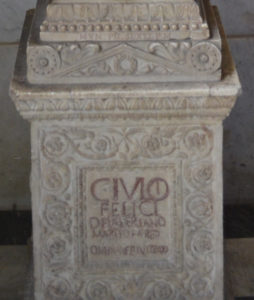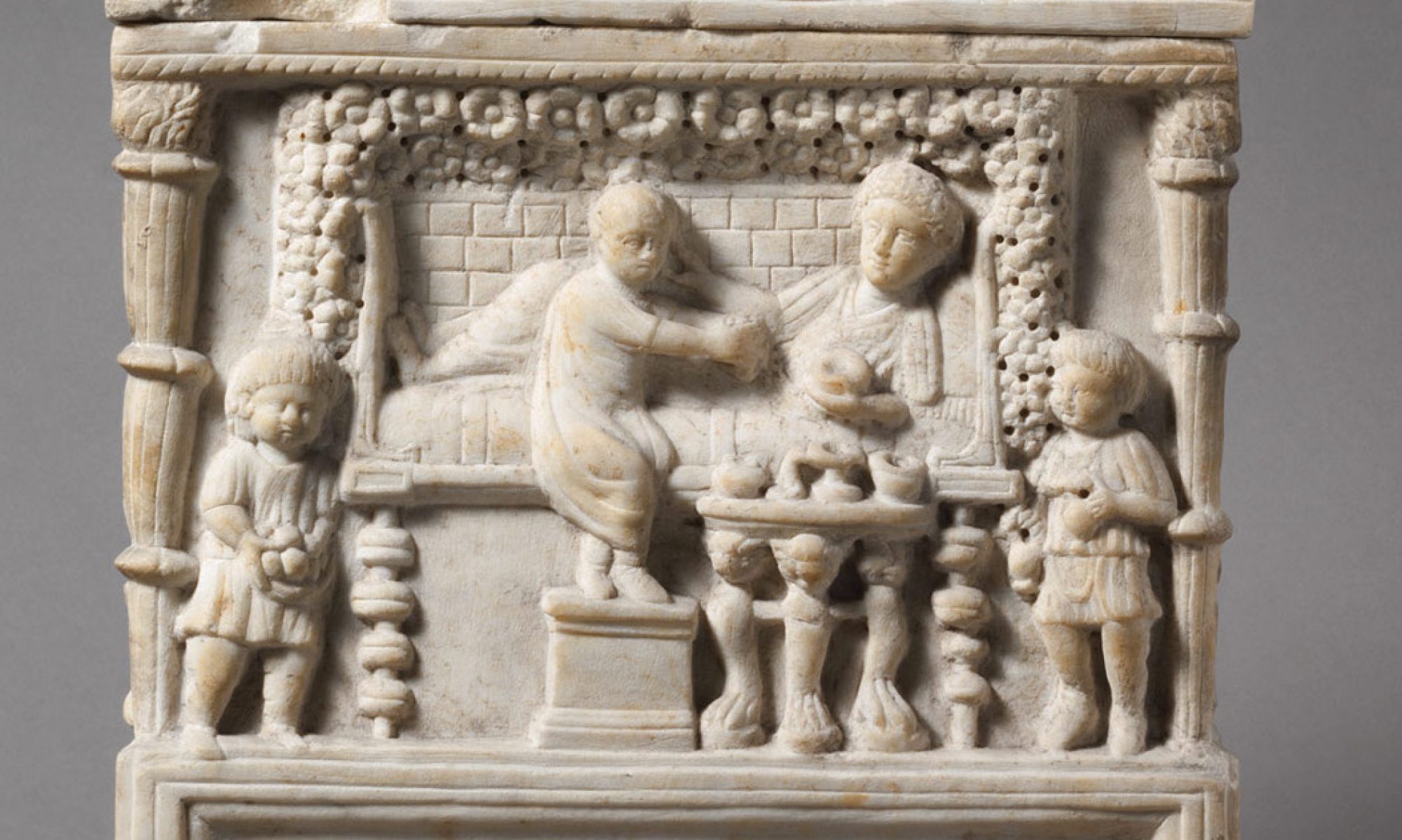Who were the people who made cinerary urns?
This project will use the terms sculptors and stone-workers at times interchangeably, but some important distinctions must be addressed first. The term sculptors in this project is not meant to suggest a master sculptor or genius of sorts, as is prevalent in other scholarship. Rather, sculptor refers to the individual executing the sculptural detail on marble cineraria. Similarly, stone-worker is a term frequently applied to individuals who produced generic work with stone. This project uses the term to encompass the range of technical execution of stone work seen in the relief sculpture of the corpus of marble cineraria. Sometimes use of the term stone-worker implies condescension or value judgment on the art object as craftwork rather than art. These distinctions are not useful in evaluating cineraria because they were a type of functional art and therefore fit into both categories as craft and creative work of art.
Lucian of Samosata provides an impressionistic description of the status of stone-workers and sculptors at the turn of the first century CE:
“If you become a stone-cutter, this woman has said it, you will be nothing but a workman, straining with your body, placing all your hope of a livelihood in it, yourself being obscure, earning little and low-born wages, dull-witted, meager in the public eye, neither sought after by friends, nor feared by enemies, nor envied by neighbors, just a common workman, a craftsman, one of the crowd, always kneeling before a superior and attending to he who can speak well, living the hare’s life and being a steppingstone for those who are better. If you become a Pheidias or Polykleites and produce many amazing works, everyone will applaud your art, but no one who can see, if they have a brain, would want to be like you. No matter what sort of person you are, you will be deemed only a craftsman, day laborer, and manual worker.”
The makers of cinerary urns and altars were, in all likelihood, freedmen themselves who worked as general stone-workers or engravers. The monuments they used for themselves or those dedicated to them are relatively inconspicuous and understudied in current scholarship. The cinerary altar of C. Iulius Felix Demetrianus, for example, who is identified in the inscription as a marble worker (marmorarius), stands mostly unnoticed as a base supporting a candelabrum in the Galleria dei Candelabri in the Museo Pio Clementino of the Musei Vaticani.

This cinerarium may also be seen depicted by Piranesi (https://archive.org/details/gri_33125011110869/page/n59/mode/2up).
This project considers closely the following inscriptions documenting marmorarii so as to explore issues of status and organization that would have directly impacted production of marble cineraria and similar relief sculpture:
CIL VI 9554 – Gaius Sempronius Felix
CIL VI 9553 – Gaius Julius Felix Demetrianus
CIL VI 6318 – Nicepor
CIL VI 9551 – Publius Alfenus Felix
CIL VI 9555 – Silbanus
CIL VI 8893 – Anteros Vedianus
CIL VI 5866 – Gaius Julius Daus Cerdo
CIL VI 9552 – Lucius Armodius Nicephorus
CIL VI 7814 – Lucius Valerius Pharnaces
These craftsmen worked with limited tool sets that are typical for all stone-workers, but also some more general builders, contractors, and wood-workers. These tools appear in reliefs carved on funerary monuments of individuals, such as the cinerary altar of Cossutius Cladus and Cossutia Arescusa, the stela of the Aebutii, or the altar of T. Statilius Aper, all in the Musei Capitolini, and then, among others, on the stela of Alcimus, one of Nero’s scenographers whose tomb is in the necropolis along the Via Triumphalis under the Vatican.
From urn to urn, the size of drill holes, for example, varies widely. However, on any individual urn, it is evident that the sculptor used only one size drill because all drill holes are of the same diameter.
The tabula and inscriptions on marble urns bear vestiges of the process for laying out letters and carving that are similar to other types of inscriptions. Many urns retain lines that were applied first as preliminary guides for keeping letters aligned and spaced out sufficiently for the content needed. These lines are rarely visible in photographs.
Workshops is a term that frequently appears in scholarship on marble sculpture; however, few if any formally organized workshop establishments have been excavated in or around Rome. Based on close technical analyses, the evidence to suggest that workshops produced cineraria is complicated. Shared and replicated designs and technical variation in sculpting are only two of multiple factors that must be evaluated before further consideration of workshops.
